Tarantulas are large arachnids that terrify some people, while others like to keep them as pets. They are most common in areas such as Mexico, Australia, Southern Asia, and Africa. In the United States, wild tarantulas are only in 13 states in the Southwest. Here, we list which US states have tarantulas.
Florida
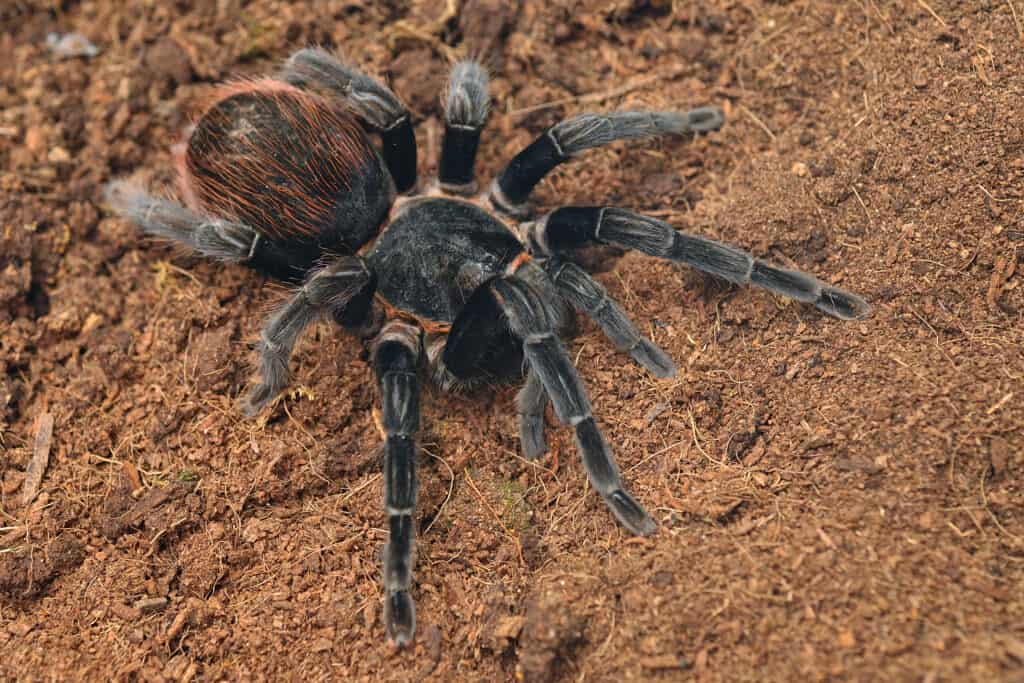
Mexican redrump tarantulas in Florida are escaped pets.
©D. Kucharski K. Kucharska/Shutterstock.com
Even though they are not actually a native species of the state, Mexican redrump tarantulas are now in parts of Florida. They were first discovered in a citrus grove in 1996. These spiders have been imported into Miami as pets since the 1970s and probably escaped.
Texas

There are six species of tarantula in Texas.
©Dallas Krentzel / CC BY 2.0 - License
Texas is home to six species of tarantula. These are the Texas Brown Tarantula, Texas Tan Tarantula, Texas Black Spot Tarantula, Chiricahua Gray Tarantula, Rio Grande Gold Tarantula, and the rather mysterious Aphonopelma moellendorfi about which little is known.
Louisiana
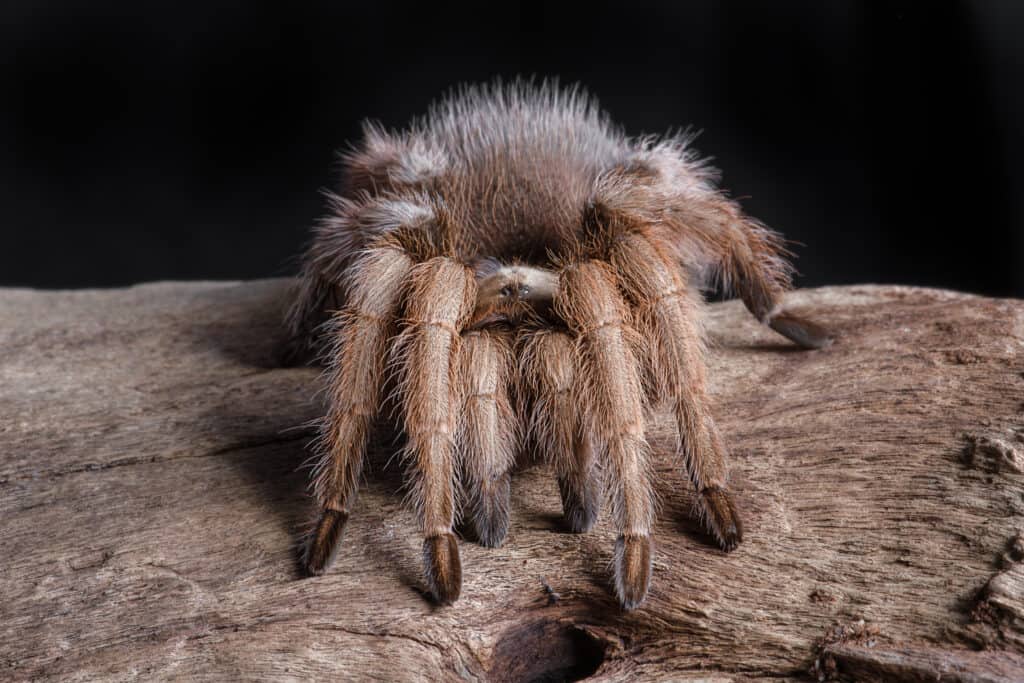
Texas brown tarantulas are found in Louisiana.
©Alan Tunnicliffe/Shutterstock.com
Strangely, the Texas brown tarantula (Aphonopelma hentzi) is in Louisiana! It is a rich brown color with a lighter brown cephalothorax. Their range extends from central to north-central Louisiana and westward to Texas, where they burrow under rocks and logs.
Arkansas
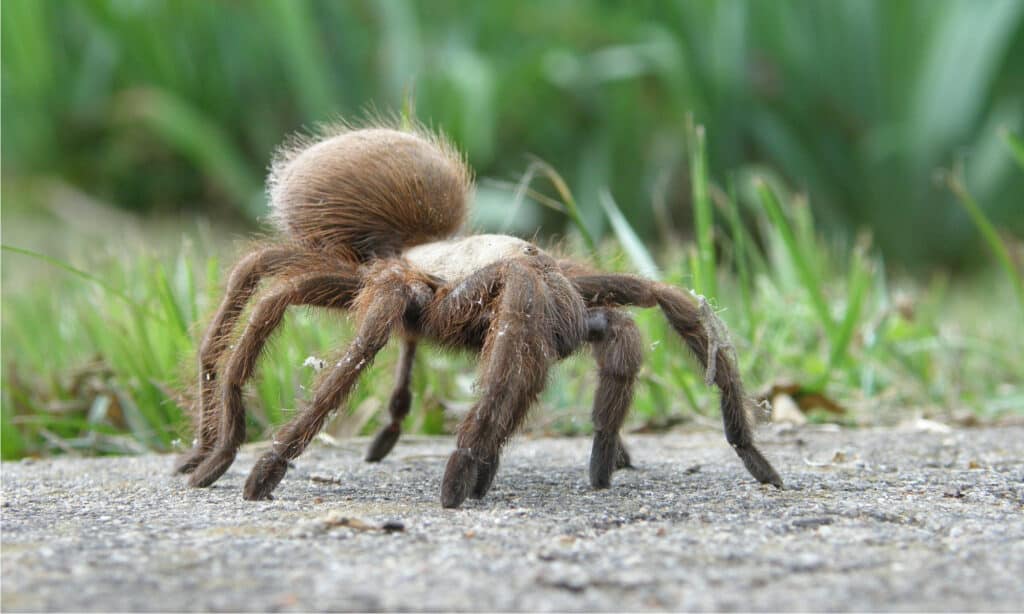
Tarantulas are found in some parts of Arkansas.
©texas brown tarantula/Shutterstock.com
Tarantulas are the largest spiders in Arkansas but arrived only 8,000 years ago. They range from the Ozark Mountains southward across the Arkansas River Valley and the Ouachita Mountains.
Missouri
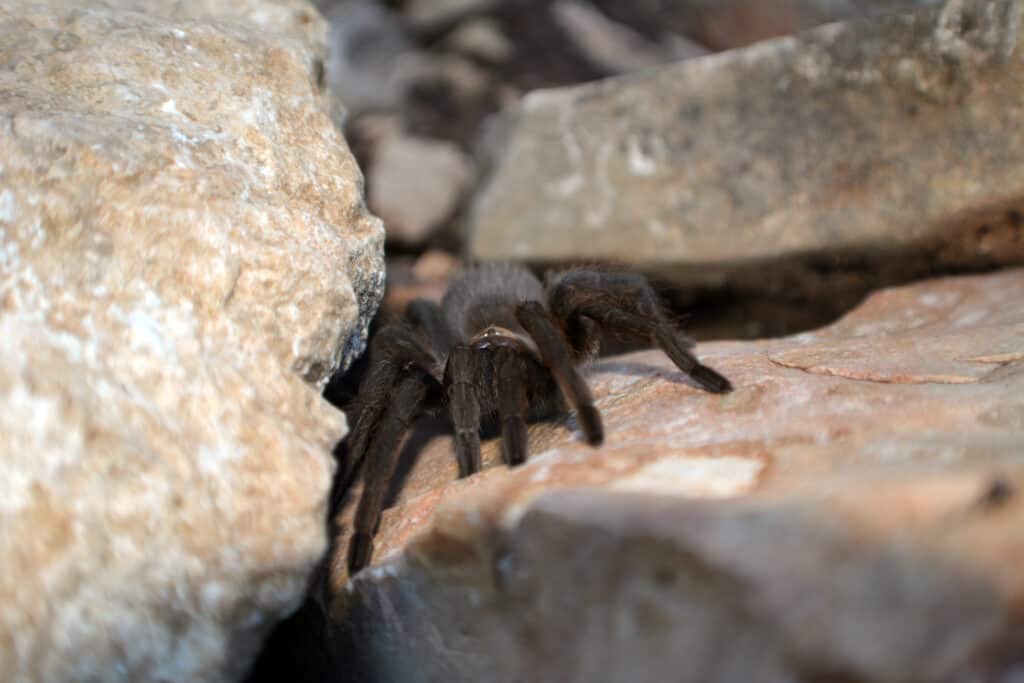
You can find Texas brown tarantulas in Missouri.
©iStock.com/PaaschPhotography
There is only one native species of tarantula in Missouri and that is the Texas brown tarantula. It also happens to be Missouri’s largest spider.
Kansas

You may spot tarantulas in Kansas.
©Tudoran Andrei/Shutterstock.com
Tarantulas are the largest native spiders in Kansas. They live in southern and western parts of the state but have possibly are around Eudora and in Lecompton as well.
Oklahoma

Oklahoma brown tarantulas are also
Aphonopelma hentzi.
©iStock.com/irin717
The Oklahoma brown tarantula is exactly the same species as the Texas brown tarantula. They shelter near small rocks and logs that they can burrow underneath but can occasionally be spotted on roadways.
Arizona
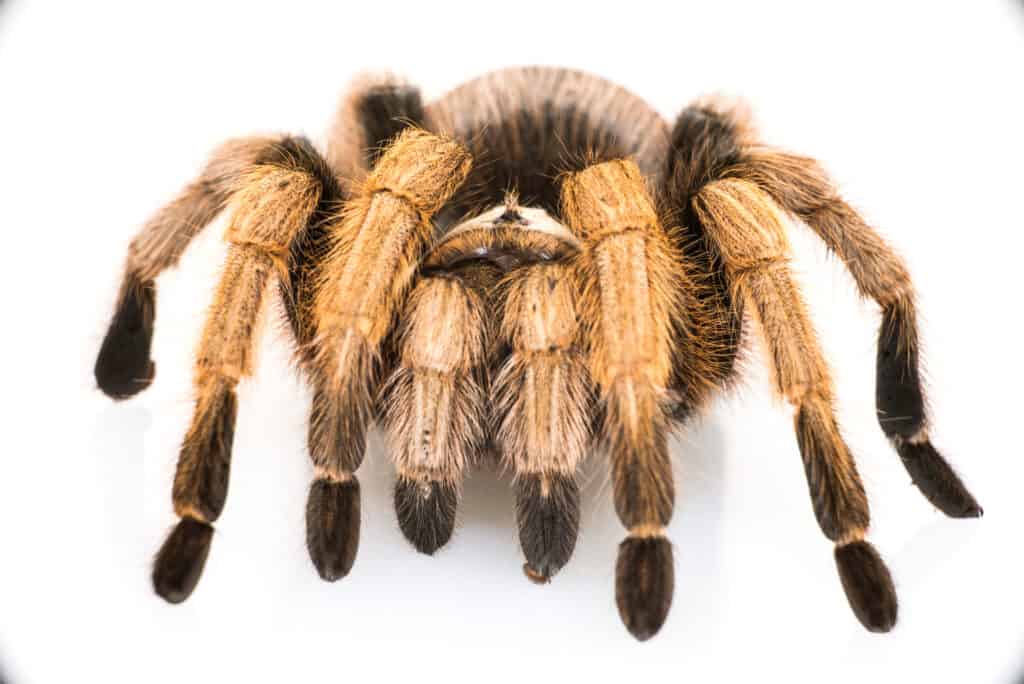
The Arizona blonde is just one species of tarantula in Arizona.
©bloomphoto/Shutterstock.com
The western desert tarantula (Aphonopelma chalcodes) is so common in Arizona that you may see it called the Arizona blonde. However, there are plenty of other species in the state where they are a common sight.
New Mexico

You can go on tarantula-spotting tours in New Mexico.
©Raisa Nastukova/iStock via Getty Images
Desert tarantulas, or desert blonde tarantulas, are a common sight in Northern New Mexico. They are often on Santa Fe Desert County Road 42, and you can even join a tarantula-spotting tour in Cerrillos Hills State Park.
Colorado
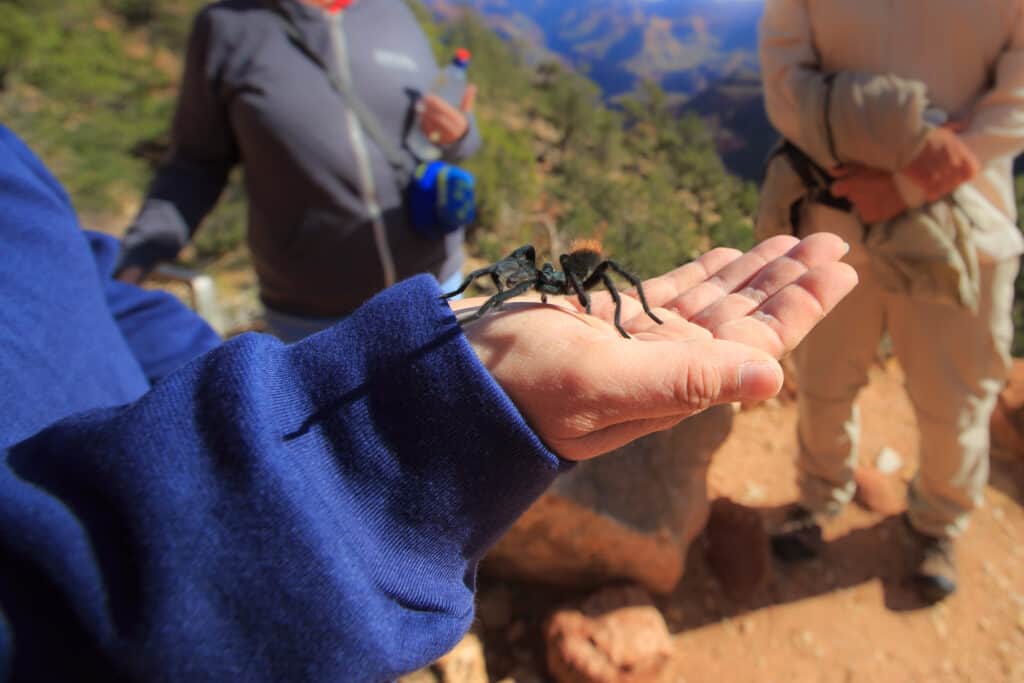
Grand Canyon black tarantulas are found in Colorado.
©Losonsky/Shutterstock.com
There are four types of tarantula in Colorado. Males take part in a migration or ‘walkabout’ every fall as they hunt for females. This has become a tourist attraction in La Junta.
Utah

Tarantulas spend most of their time under rocks in Utah.
©lightphoto/iStock / Getty Images Plus via Getty Images
The genus of tarantula found in Utah (Aphonopelma) is not harmful to humans. At times, they are as far north as Cache County, but that is about the northern limit of their range.
Nevada
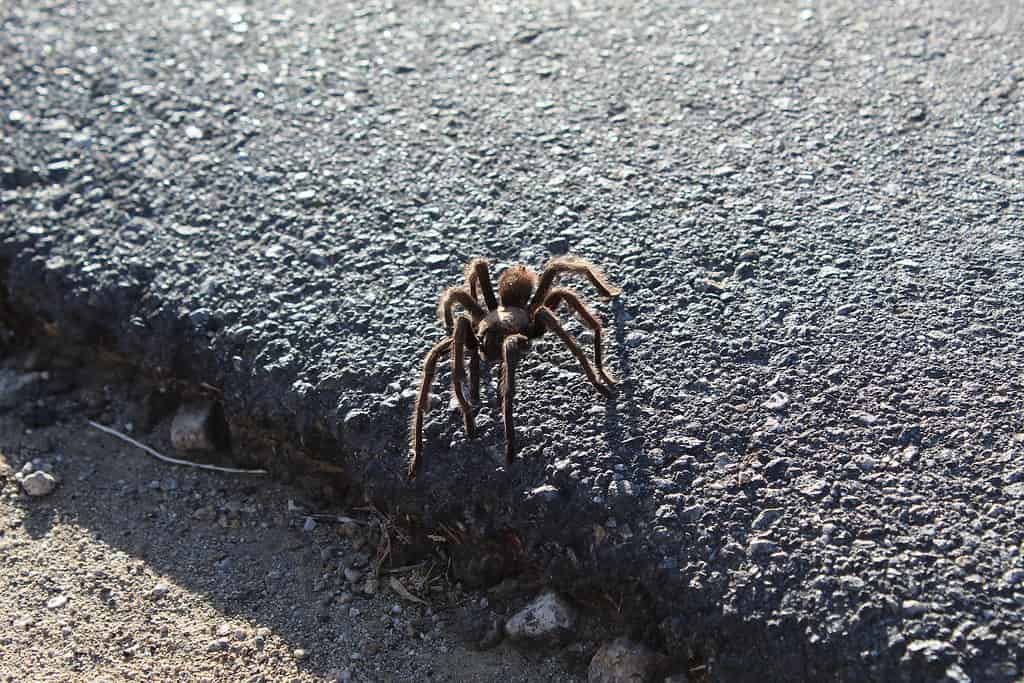
During migrations, tarantulas are found on roads.
©Jared Quentin/iStock via Getty Images
The desert tarantula and its cousin, the western desert tarantula, can be found in Nevada. During their annual migration, tarantulas often outnumber the 100 residents of Gabbs, Nevada!
California
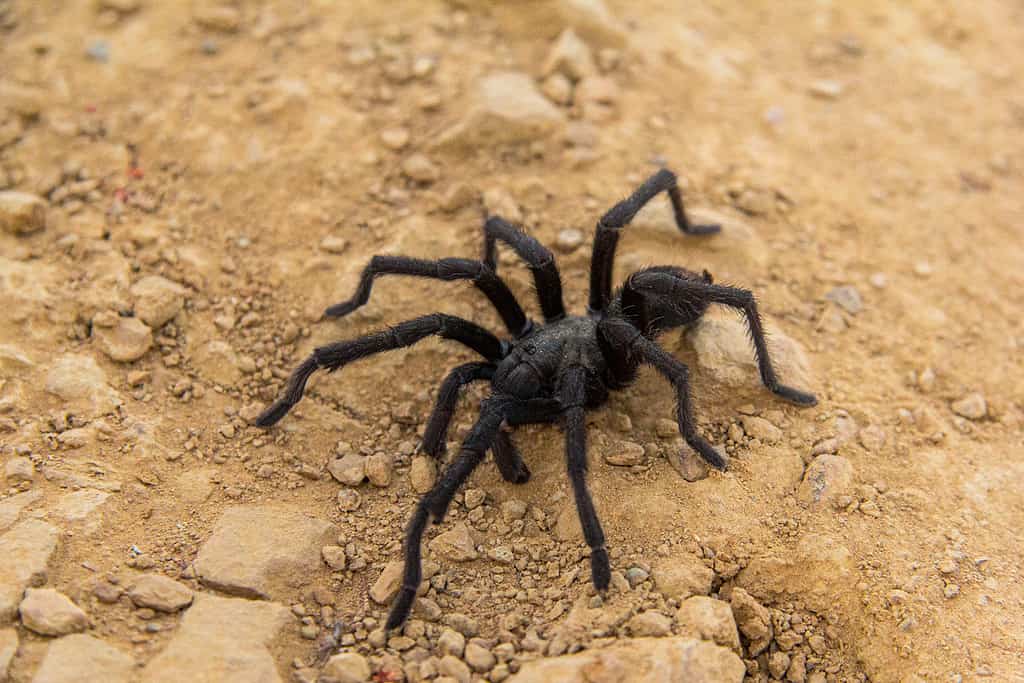
The Black tarantula lives in California.
©Adam Mustafa/ via Getty Images
The California tarantula is Aphonopelma californicum. However, there are other species in the state, including the California Black (or “Ebony”) Tarantula (Aphonopelma eutylenum).
The photo featured at the top of this post is © iStock.com/Stephen Couch
Thank you for reading! Have some feedback for us? Contact the AZ Animals editorial team.






